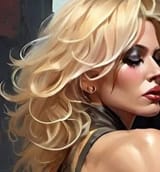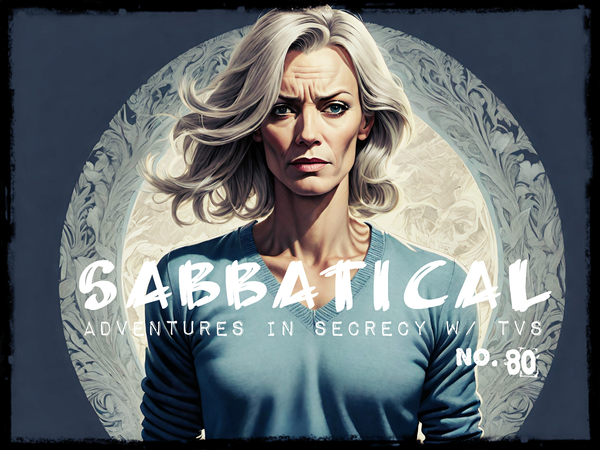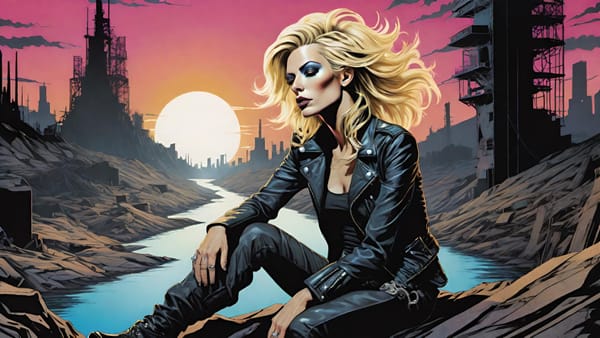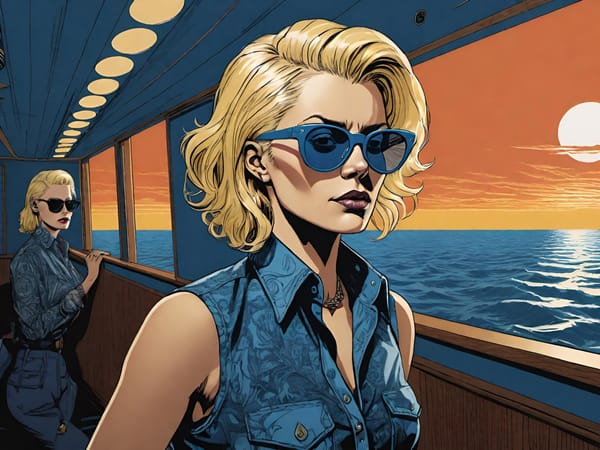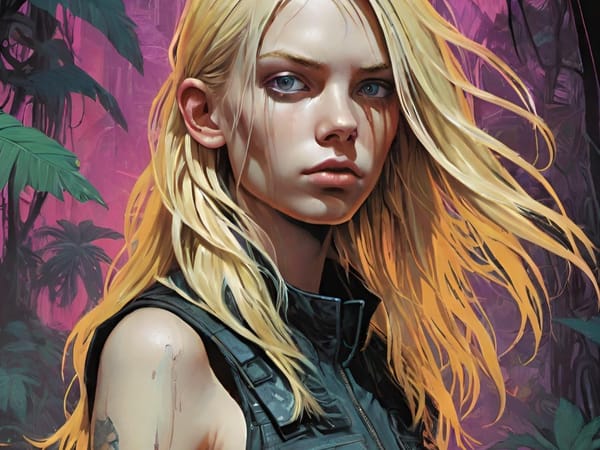Back How It Was
This issue we’re ‘celebrating’ one year of this publication. Yay! And so we’re going back how it was in the beginning, before I’d splintered it into a thousand subzines. To be fair, that was the plan all along, so that prismatic subsectioning is also part of the original intent; but, the format was necessarily different before we had all those areas fleshed out.
Anyhow, here we go, once again, in the old way …
Self-loathing Continuity
I’ve written about it many times: my disdain for ‘canon’ and ‘word of god.’ I have called this the ‘self-loathing continuity’ of my series, The Secret of Secrets, and today I have solidified it further. Basically the ‘official continuity’ is an enemy of the project and so the plan to put out revisions and drafts and redrafts and revisions of redrafts and re-publications of original drafts within new drafts all works very well toward the goal of thwarting any kind of definitive order or chronology. Inquire below! You know, in the comments.
Best Reviews I Never Got: A Cringefest
To a GenZee, cringe is a fate worse than death. But ima Xer, so my life is kind of cringe already. It’s whatever.
They are scattered throughout the rest of the newsletter, in quotes like this one:
Not quite spy novel, not quite romance, not quite sci-fi fit but some mixture thereof, the book has clear literary ambitions, though many go unfulfilled.
They all refer to my only book in print, Everything Fails, which you can get at Amazon, Barnes & Noble, your library, and like a thousand different online shops that no one ever buys anything from! And if you don’t want to pay me, which is the fashion of the day, you can read the whole thing for free on the mostly-dead social media platform Ello.
Navigating the Newsletter: A Metastack Guide to Finding Your Way Around This Fucker
There are multiple user experiences offered by Substack, as is the custom of our online times. I call these the three sisters, and they are: Web, Reader, Email.
Da Web XP
This is my personal preference because it is closest to the author user experience, meaning how I create the content matches 1:1 with the way it’s displayed on the Substack website version. But, I’ve learned a lot of folks don’t like the web version. I’m not sure why, so be sure to let us know in the commies below!
Reader App
Apps are kind of like the blondes of UX, aren’t they? People love an app. I suspect this is 500% true for Apple users. As a rule, I am indifferent to apps, but I can’t say I’m terribly impressed with the Substack reader app. I mean, it’s fine. It does what it’s supposed to, which is an important quality in, well, anything, but especially in a piece of computer software. So if you must date this sister, please notice that hyperlinks are simply underlined and not a different color. Why they did this, I have no idea. But that’s how they did it. So no one clicks the links in the app verzsh. It’s hella annoying.
Kina the old maid of the sisters, she is tried and true and what most people think of, probably, when they think ‘newsletter’ in the contemporary sense of the word. The email format is fine except for a few reasons. First is that it has a length limit, and that is frustrating as a writer. Second, it will redirect you to the reader app if you have it and try to engage with it through email. I guess that’s it. And third, there is really nothing I can do to help you find your way around from there. You’re just in a static email.
Okay, so those are the three ways to interact with all of this. Most tips I have are for the web version because, again, none of these work through email or the reader app.
Arrows at the bottom
If you’ll notice, there are navigation tools (in the webpage version of this post) that allow you to select ← Previous and Next → posts. Those are chronological, which does not work especially well if you are trying to go through my different sections cos they don’t segment out by section. (If I’m wrong about that, please tell me.) So I have to build navigation into each section that requires narrative sequencing. A pain, to be sure, but not something new for me. That’s pretty much every site I’ve ever used to put out writing. But if you don’t give a shit and just wanna read another, you can use these arrows to get around a bit.
Table of Contents (aka “The Caverns”)
A made a page of links, divided into sections, that is a table of contents for the entire work that is Adventures in Secrecy with T Van Santana. It was originally called “Table of Contents,” but I rebranded it “The Caverns” in my ‘go deeper’ soft rebrand whenever that was. This is the best way to both survey what all is on offering and to get around—with one notable exception …
The Backbone
My current novel—if it can still be called that—is Teresa’s Backbone. Because it is a novel, and because it is a novel with many different plotlines, it has its own table of contents called “The Backbone.” It has an introduction, too. I will be building out better story path navigation in the near future. Thank you for your patience!
That’s pretty much how you can get around this place. If you know of something I left out, let us know below!
Patreon? Yes? No? Probably.
So I kina loathe Patreon both as a company and a UX, but definitely as a UX. However, it seems like almost every goddam content creator uses it, so … <sighs> I guess that means I have to try to use it again. I still have a page? I think? But it doesn’t work. And it’s like ten thousand years old. So I gotta spruce her up. If you have any tips for T, letcha girl know.
Gaming Nerd Shit
If you’ve been following me at all, you know I’ve been kina deep into game writing and game design lately.
If you’re new to this circus that is my creative life, then, well, now you know!
So I’ll get to a few things I’ve been working on, but first let me plug something cool someone else is doing …
Shadowdark
Shadowdark is closing in on a milly. If you have thrown your cash at it yet and you have an ounce of nerd decency, do it now! Kelsey Dionne, the game’s creator, is super cool and has some serious old school gaming cred, having gamed with folks from Gary’s original group when she was a kid. It’s cool she’s a young woman making OSR content cos that’s a crusty old white dude dominated arena. And it’s super awesome that she is gay, something that is not really being talked about at all. I guess that’s progress? That it doesn’t matter. But it does matter to me. Representation matters because without it, you don’t fucking exist. That’s the message. But all that aside, it’s a neat project, and if you like 5e or OSR, it’s kind of got you covered. Nice bridge between the two. Haters to the left, please.
Kelsey’s Writing Advice
In a video that may suddenly appear here if I can find it easily enough, Kelsey gives some great adventure writing advice that I have summarized into bulletpoint form for you! They’re pretty close to exact quotes. Here it is:
Do something fun
Don’t feel the need to conform to expected tropes
Take something ordinary and write it in a way that is a little bit different and delights you, that brings you joy
Aim for 15 rooms that include:
People who wish the PCs harm
People who want to ally with the characters
People who are fighting with each other
Monsters who want things
Monsters who have things
A trap
Write it up
Publish it
Don't be too concerned about things looking nice; you'll refine your style and presentation as you go
Okay, so that’s Shadowdark. Not that she really needs my help promoting this beast, but I dig it, so. There ya go.
Now, onto my stuff, which is much less ambitious …
YouTube Channel
I’m actually working on two YouTube channels, but we’ll talk about the second one some other time.
This is one is for gaming shit, mostly reviews, but I have a few different content areas:
- Game systems reviews/overviews, such as Vampire: The Masquerade, Gamma World, and a blillion different versions of Dungeons & Dragons, ofc.
- ‘How-to’ vids focusing on both how to design game elements and how to referee them effectively in the wild
- Analysis and video essays. Which I will try to keep brief and positive. And by ‘positive’ I mean ‘not scathingly negative or whiny.’ And by ‘try’ I mean ‘no promises tho.’
- Specific product reviews
- Wishlist vids, wherein I will shout into the void of da Tube and try to summon those gaming items that I most wish were extant and hopefully won’t have to make myself
Did I miss anything? My bestie suggested live play, but frankly I don’t have the lifestyle set up for that right now. Maybe in a few years. But any other suggestions, I’m all elven ears.
First novel by enigmatic author, T Van Santana, Everything Fails centers on an unnamed narrator (implied to be Van Santana) in the 32nd Century, a world not terribly dissimilar from our time awash in social media that literally surrounds users in a bubble and the natural world is overtaken by man’s tireless inventions. The story runs back and forth in the narrator's life, switching from their current situation as a private secretist, a kind of cult-like spy ring, and their young life on a murderous jungle world. The link between the two is not explicitly stated, but the reader can infer from the subtitle, a science fictional memoir, that the novel itself is indeed the subtitular memoir, itself written during the book by the narrator and the resultant fallout that ensues. It’s a reflection on aging, paranoia, and freedom, seen through the eyes of a resolute nonconformist who can't stop trying to belong in a galactic age that doesn’t suit them.
Da Novel
So I mentioned Teresa’s Backbone a minute ago. It is … complicated. That’s not on purpose. In fact, this was supposed to be a very straightforward ‘guidance’ novel that would, hopefully, make all the complicated and confusing aspects of the Secret of Secrets clearer and entice more folks to try and read those books.
But it hasn’t really gone that way. Sorry, babe. It wasn’t for a lack of trying, I swear to goddess.
So now we have:
“The Backbone,” which, as I said is a table of contents and readers’ guide for the novel. It explains itself, but I’ll explain here cos people still get confused.
There are two presentations of the novel currently. (There will be more, but don’t worry your pretty head about that rn.) The first is the order in which they are published. This is given in the ‘entries’ list of links on the Backbone page. The second is by story path.
What’s a story path?
You could think of a story path as a plotline, I guess. You could think of it as a novella or short story presentation of certain chapters in the novel. I’ve done this because people complain all the fucking time about getting lost or confused, and it seems to help a lot of folks stay with what’s going on. It’s not really my preferred way to read this or any book, but I know it helps, and I wanna help you, babe. Honest, I do.
So go ahead and jump on path and try it out. Here’s the first chapter for three of the longer ones. All the paths will get longer. I’m just still writing the book. And as I said, navigation at the end of each chapter will improve, too.
Paths:
Start reading the ‘Dad’ path with “Nice Folks.”
Jump onto the ‘me & you’ path in which you yourself are one of the main characters. Start here with “Hey bae.”
Who Killed Wendy Glass? Many years later and we still don’t know. But I’m going to solve it this time! Work the case with me starting here, with “Wendy.”
Wanna be the person of my dream? You can be! Follow the ‘dreams’ path, starting with “The Dream I Had Last Night.”
Everything Fails went through about five versions to become the one that’s in print. But, now you can read an all new story (well, kind of) branching off from the discarded chapters of the first draft. Get on the ‘first cut’ path over ‘chere, beginning with “Up Through the Cracks, Like Grass Under Concrete.”
What do you think about the story paths? Is this something you would do as a writer? As a reader, have you read anything that uses a similar approach? Let’s us known in the ‘ments.
Five Day Novel Candidates
There’s this book called The Five Day Novel by Scott King (no relation to Stephen King, which I throw out there cos someone always asks), and it is insane. Why? Cos it is just what is says on the tin. It’s a book about writing a novel in five days. And that is not a healthy plan. He pretty much says as much, and does a pretty good job of suggesting how to set yourself up for success and to take as good of care of yourself as possible given that what you are doing is not at all wise.
If you thought NaNoWriMo was hardcore, this is like the fucking Tough Mudder version of that. To date, I have not successively done it—though I did write about 20k in 5 days, I think, which is still not at all healthy.
So I’ve made a list of potential candidates for this, and here they are for you to vote on. This is actually a pared down list cos I have about thirty of them.
I know you don’t know what any of those are about. Just vote by feel. Or ask me questions. Whichever.
Everything Fails is a novel that defies description, mostly because it can’t commit to staying within the genre lines of sci-fi, mystery, spy thriller, or teen romance novel. It’s at once a Bildungsroman and psychological novel, a throwback to pulp stories and a sneering entry into transgressive lit. The ouroboros authorship, the merciless introduction of one character after another with almost no description beyond a name, many times the same name as another character, the presumption of a basic education in philosophy and a substantive knowledge of sff history; it's not a gentle ride. But within its spiny interior lies a fundamental question about life: why bother? An answer is offered, though again, not easily. The book itself, both in its its own construction and thematic centerpiece, requires the reader to have an answer already and then be willing to consider its worthlessness or worthiness against the titular thesis of the novel.
Grief, Loss & Death in the Time of COVID-19
So the offish state of emergency in the US is ending. I still have yet to be infected (to my knowledge). It’s kind of a weird feeling since everyone seems just … fine with it now. It’s like the new normal. Endemic, or whatever. I could go on about this forever, so I won’t. That’s just a thing that’s happening and that I’m dealing with.
Here are a couple photos from a project I did back around the time of the initial outbreak:

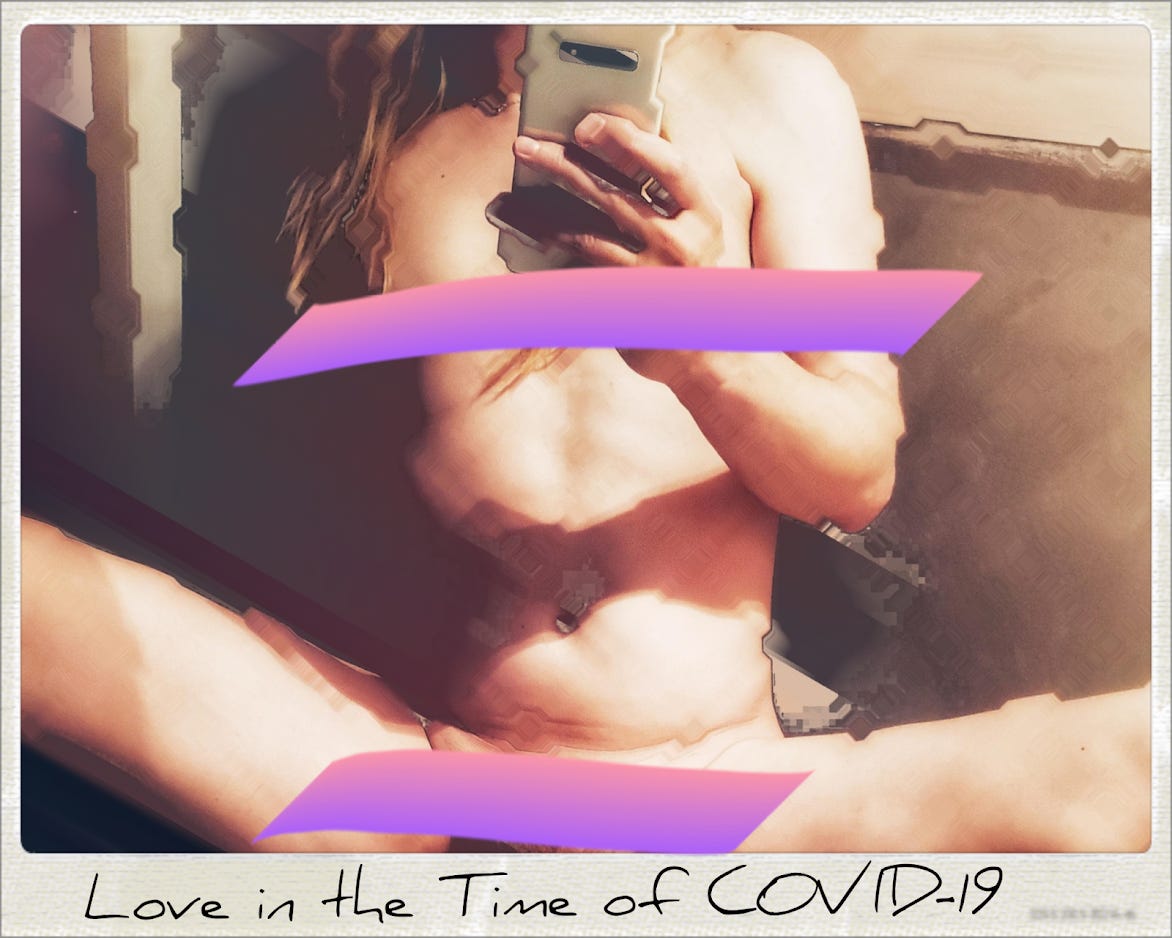
Dad
As I said last ish, my dad died back in January. So grieving has been happening and in the ways you might expect. Or maybe you wouldn’t. I don’t know. We don’t have good cultural ideas about sickness, death, loss or grieving here in 21st Century ‘Murica. I’m doing my best. It’s not easy.
Songs
Three songs I’ve been listening to a lot:
And my favorite song rn:
Teasing the special gift for supporters of the Stack
Here is a picture:
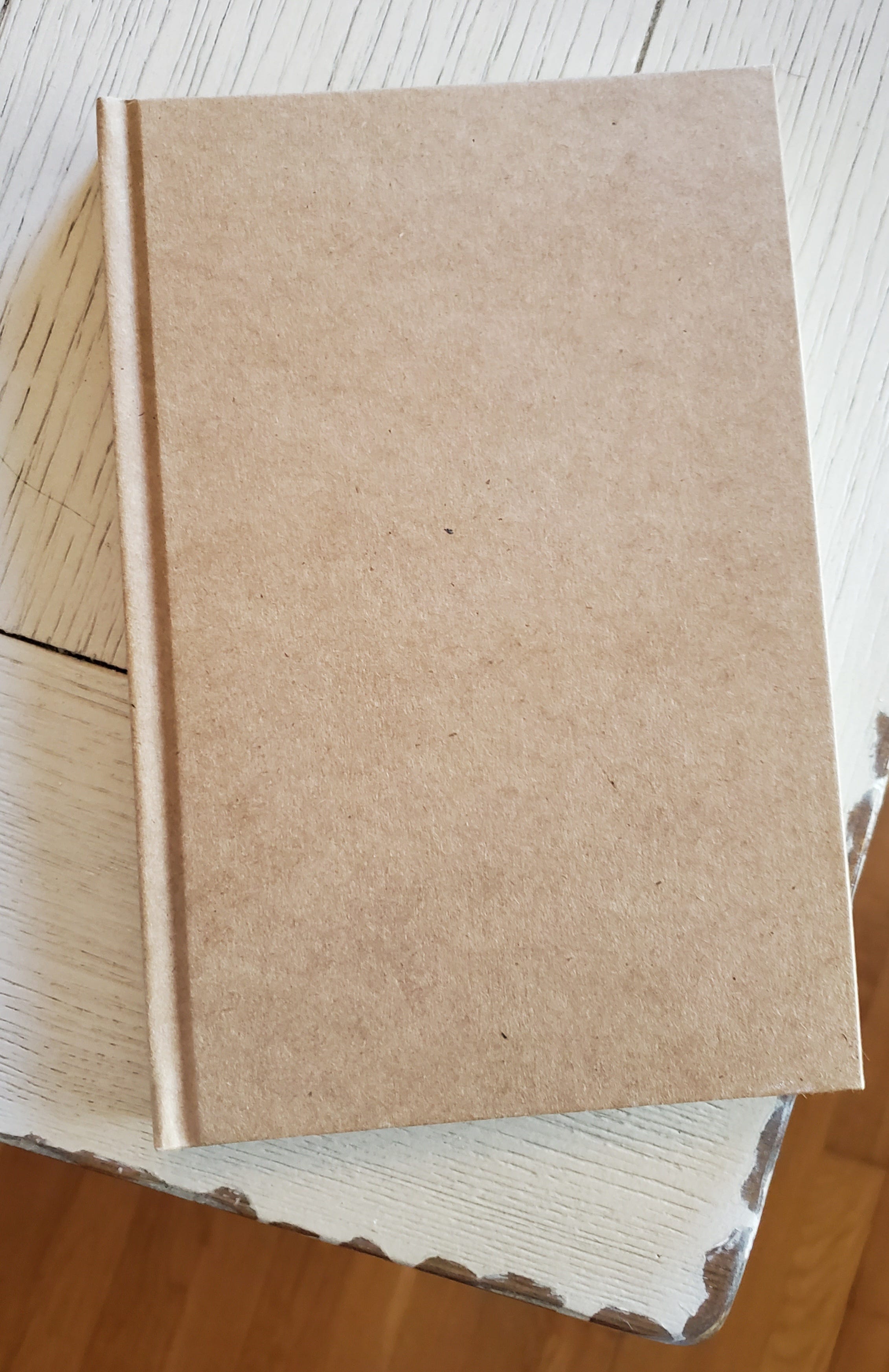
Here is another:

Which is how it starts. Not much to look at. But there’s more to come.
Shout Outs
Thank you to Jeff, Chev, Charlotte, and Ben for your very kind words. And to the more or less legendary Luka Rejec for being so kind and supportive of someone he doesn’t even know.
Check out their Stacks, won’t you?
Oh, and I should close with what is the best actual review my book got. It’s from Emily Haven, and it goes like this …
Van Santana writes in a voice that is simultaneously harsh and poetic. Some of the most compelling parts of Everything Fails are when the author walks that line, exploring the ways in which we as human beings cause each other emotional (and at times, physical) pain. Someone else here described the relationships between some of the primary characters as “frenemies,” and without giving too much of the plot away, I would agree that's an accurate description. In fact, I'm hard pressed to think of another novel I’ve read that paints a more accurate picture of the “frenemies” dynamic.
It’s also downright refreshing to find an author who smashes gender and orientation conventions so thoroughly in their writing. Female auto mechanics, multiple nonbinary characters, same-sex romances... there's something here for everyone who doesn’t fit into the heteronormative, cisnormative, or even just the “ladylike” boxes that more traditional romance novels celebrate. And there are certainly romantic elements present in this story, albeit ones experienced through the main character's filter of disillusionment and cynicism. In a sense, love is what holds this story together, whether that love is directed toward friends, lovers, or offspring.
The portrayal of love, and pain, is what kept me reading, until I realized that I was suddenly halfway through the book. I found myself rooting for the main character, hoping against quite a lot of evidence that things would turn out okay for them somehow. If you give it a try, I think you'll find yourself just as unexpectedly invested in this dystopian and oddly beautiful tale.
Till next time, mah lovelies!
Xoxo,
T

AIS 0054

